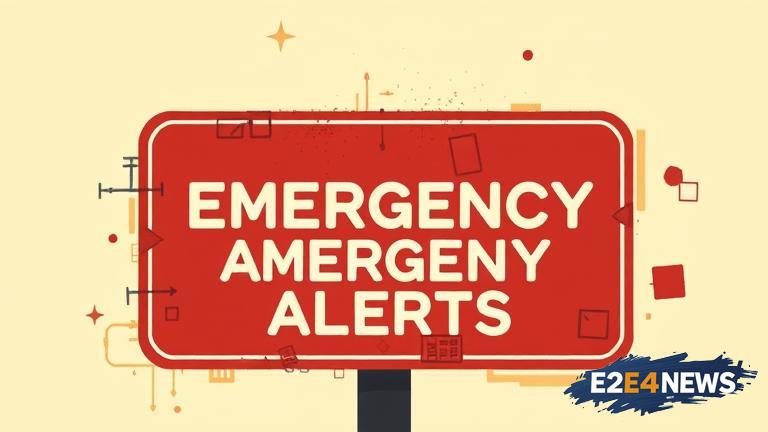The recent discussion on the overuse of emergency alerts has sparked a debate about the potential consequences of such actions. Kerre Woodham, a prominent radio host, has expressed her concerns about the frequent use of emergency alerts, suggesting that it may lead to a sense of complacency among the public. This complacency could result in a decrease in response to actual emergencies, putting lives at risk. The emergency alert system is designed to inform the public of critical situations, such as natural disasters or terrorist attacks, and prompt them to take necessary actions to ensure their safety. However, the frequent use of these alerts for non-emergency situations may desensitize the public to their importance. For instance, if emergency alerts are sent out for minor incidents, such as a power outage or a traffic jam, the public may become less responsive to alerts for more severe situations. This could have devastating consequences, as people may not take the necessary precautions to protect themselves and their loved ones. Furthermore, the overuse of emergency alerts may also lead to a decrease in trust in the system, as people may begin to question the validity of the alerts. This erosion of trust could have long-term consequences, making it more challenging to communicate critical information to the public during actual emergencies. In addition, the frequent use of emergency alerts may also cause unnecessary panic and disruption to daily life. For example, if an emergency alert is sent out for a minor incident, it may cause people to evacuate their homes or workplaces unnecessarily, leading to disruption and economic losses. The solution to this problem lies in striking a balance between keeping the public informed and avoiding complacency. Emergency alerts should only be used for critical situations that require immediate attention and action. Moreover, the public should be educated on the proper use of emergency alerts and the importance of responding to them. This can be achieved through public awareness campaigns and education programs. The government and emergency services should also review their protocols for sending out emergency alerts to ensure that they are only used in situations that warrant them. By taking these steps, we can ensure that the emergency alert system remains effective and that the public remains responsive to critical situations. The consequences of not addressing this issue could be severe, and it is essential that we take a proactive approach to preventing complacency and ensuring the public’s safety. In conclusion, the overuse of emergency alerts is a critical issue that requires attention and action. By understanding the potential consequences of complacency and taking steps to prevent it, we can ensure that the emergency alert system remains a vital tool for keeping the public safe. The public, government, and emergency services must work together to address this issue and prevent the erosion of trust in the emergency alert system. Ultimately, the goal is to create a system that is effective, trustworthy, and responsive to the needs of the public. By achieving this goal, we can ensure that the public remains safe and informed during critical situations. The importance of this issue cannot be overstated, and it is essential that we take immediate action to address it. The future of the emergency alert system depends on our ability to strike a balance between keeping the public informed and avoiding complacency. We must be proactive in our approach and work towards creating a system that is effective, efficient, and responsive to the needs of the public.





